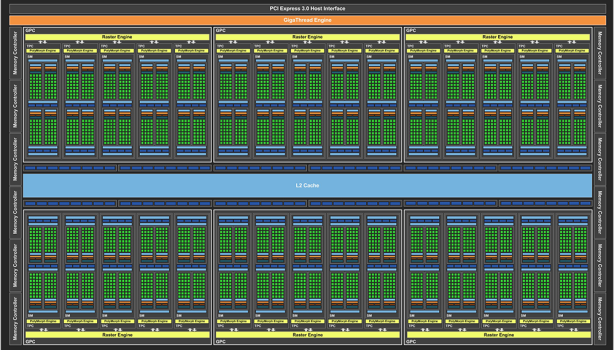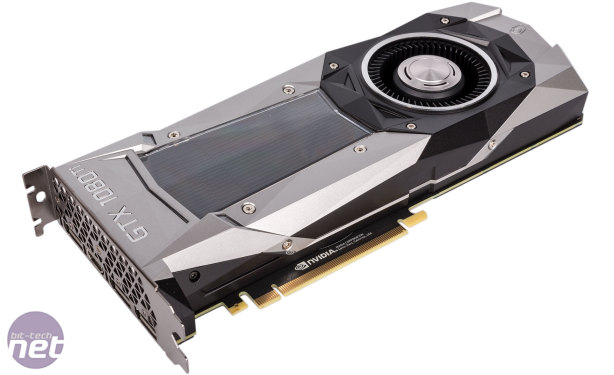
Nvidia GeForce GTX 1080 Ti Review
Manufacturer: NvidiaUK price (as reviewed): MSRP £699 (inc VAT)
US price (as reviewed): MSRP $699 (ex tax)
It's a little hard to believe, but Nvidia has had the high-end GPU market virtually to itself for nearly a year now, with AMD having had no real answer to flagship Pascal parts from Nvidia since the GTX 1080 launched in May last year. In fairness, AMD has had a lot on its plate of late, but with Zen-based CPUs now finally available, the pressure is on the red team to get cracking with Vega, as Nvidia is showing no real sign of slowing down. Last week at GDC, Nvidia made public its GTX 1080 Ti graphics card, another high-end Pascal GPU that it proudly describes as its best-ever Ti card.
There are a few reasons for this, but it basically boils down to the new Ti card having a bigger-than-ever lead in performance over the x80 card - in this case the GTX 1080. Nvidia puts the figure at 35 percent, which we'll of course be putting to the test. The other reason, and one that Nvidia doesn't shy away from, is that the GTX 1080 Ti is actually faster than the Titan X. Now, the Ti cards have always tended to make the Titan cards look like a pretty bad deal (not that this is likely to bother those who had the cash to splash on Titans in the first place), but this is the first time Nvidia has rendered the current-gen Titan card practically irrelevant. Previously, for example, Titan owners could point to superior FP64 performance or a significantly larger frame buffer as evidence of its superiority.
The GTX 1080 Ti announcement was accompanied by some more welcome and even surprising news, namely a price drop from for the GTX 1080, with the least expensive models in the UK now sitting at £500 or so. In turn, pricing for the GTX 1080 Ti was also lower than many expected. Yes, £700 is a lot, and yes, its MSRP is 40 percent more than the GTX 1080's, but if the 35 percent improvement in performance holds up, that's not such a bad deal, and this time the Founders Edition will be sold at MSRP instead of at a premium. Responses to the pricing reveal have been largely positive, and what's most interesting about that is Nvidia has now managed to get people considering a £700 GPU to be relatively good value. In a sense, this is true, as it's set to offer Titan X-beating performance for £400 less and appears to sit well relative to the GTX 1080 too, but it wasn't so long ago that such a proposition would have been unfathomable and even laughable.
So, what exactly is the GTX 1080 Ti. The short answer is that it's effectively a Titan X with a slightly faster core and faster memory but with a (very) slightly crippled cache and back-end and a 1GB lower frame buffer.
| Nvidia Titan X (Pascal) 12GB | Nvidia GeForce GTX 1080 Ti 11GB | Nvidia GeForce GTX 1080 8GB | |
| GPU | |||
| Architecture | Pascal | Pascal | Pascal |
| Codename | GP102 | GP102 | GP104 |
| Base Clock | 1,417MHz | 1,480MHz | 1,607MHz |
| Boost Clock | 1,531MHz | 1,582MHz | 1,733MHz |
| Stream Processors | 3,584 | 3,584 | 2,560 |
| Layout | 6 GPCs, 28 SMs | 6 GPCs, 28 SMs | 4 GPCs, 20 SMs |
| Rasterisers | 6 | 6 | 4 |
| Tesselation Units | 28 | 28 | 20 |
| Texture Units | 224 | 224 | 160 |
| ROPs | 96 | 88 | 64 |
| FP64 Performance | 1/32 FP32 | 1/32 FP32 | 1/32 FP32 |
| Transistors | 12 billion | 12 billion | 7.2 billion |
| Die Size | 471mm2 | 471mm2 | 314mm2 |
| Process | 16nm | 16nm | 16nm |
| Memory | |||
| Amount | 12GB GDDR5X | 11GB GDDR5X | 8GB GDDR5X |
| Frequency | 1.25GHz (10Gbps effective) | 1.375GHz (11Gbps Effective) | 1.25GHz (10Gbps effective) |
| Interface | 384-bit | 352-bit | 256-bit |
| Bandwidth | 480GB/sec | 484GB/sec | 320GB/sec |
| Card Specifications | |||
| Power Connectors | 1 x 8-pin, 1 x 6-pin | 1 x 8-pin, 1 x 6-pin | 1 x 8-pin |
| Stock Card Length | 267mm | 267mm | 267mm |
| TDP | 250W | 250W | 180W |
The longer answer is that the Titan X uses the same 471mm², 12-billion transistor GP102 die as the Titan X configured in nearly the same way: 28 Streaming Multiprocessors split across six Graphics Processing Clusters net you 3,584 CUDA cores and 224 texture units. The standard features of the Pascal architecture, like Simultaneous Multi-Projection (SMP), are all present and correct. The GPU base clock is set to 1,480MHz, which is just over 4 percent more than that of the Titan X and gives us a boost clock of 1,582MHz.

Click to enlarge - The full GP102 die; in the GTX 1080 Ti, two of the SMs, one memory controller, and 8 ROPs are disabled
Memory controllers are tied to ROPs and L2 cache segments in Pascal, so the loss of one of 12 32-bit memory controllers in Titan X takes us down to a 352-bit interface, 88 ROPs, and 2,816KB of L2 cache. The GDDR5X frame buffer has also been lowered to 11GB – an odd number that seems to have been chosen only to keep the Titan X relevant to someone i.e. he or she for whom the extra 1GB is more important than the speed of the card. If you're out there, let us know. Despite the lesser interface, memory bandwidth is up thanks to new 11Gbps GDDR5X memory chips (up from 10Gbps) co-developed with Micron. This brings the raw memory bandwidth up to 484GB/sec: a scant 4GB/sec more than Titan X and 164GB/sec (51 percent) more than the GTX 1080, although a version of this latter card with 11Gbps GDDR5X is also in the works, which will close the gap to 132GB/sec.

MSI MPG Velox 100R Chassis Review
October 14 2021 | 15:04









Want to comment? Please log in.